NEW PLASMA PHYSICS PHENOMENON DISCOVERED
© Ministry of Defence of the Russian Federation
Mining University researchers, joined by their colleagues from the Obninsk-based Institute of Physics and Power Engineering, discovered a brand-new physical phenomenon. Its areas of use include: improving the efficiency of intercontinental ballistic missile control, building the spacecraft capable of flying under extreme conditions of outer space, facilitate the construction of self-sufficient nuclear power plants designed for operating in such remote areas as the Arctic, for instance. According to some experts, the practical results of this scientific research are so impressive they deserve to be called "a discovery of the year".
ADAPTATION OF COAL-TO-SNG PRODUCTION TECHNOLOGY TO RUSSIAN REALITIES
© suek.ru
Russian-German joint research mainly focused on assessing the market competitiveness of products developed using advanced gasification technologies. For example, the overall process chain costs for the deep processing of one tonne of low-ash – that is, higher-quality – coal equal €256, with the figure amounting to €279 for high-ash coal. This being said, methanol prices exceeded $300 in 2017 and reached $400 in 2021.
TECHNOLOGY FOR RECYCLING APATITE-NEPHELINE ORE PROCESSING WASTE INTO MARKETABLE PRODUCTS
© phosagro.ru
In 2015, PhosAgro commissioned Mining University to develop a technology for converting phosphogypsum into crystalline products such as ammonium sulphate and calcium carbonate. The research team aimed to engineer a prototype unit at the Cherepovets-based chemical cluster of the company. This facility produces almost 4.5 mln tonnes of phosphate-based fertilisers a year. Eventually, a pilot line was designed to process 50 kilogrammes of phosphogypsum per hour, allowing further scale-up.
PENETRATION OF LAKE VOSTOK
In 2012, the Mining University drilling team pierced the ice shield to the surface of Antarctica's subglacial Lake Vostok, located at a depth below 3,700 metres. They became the first to have taken the samples of lake water, which may have been isolated for millions of years. The ice cores obtained from the boreholes may contain ice from up to several hundred thousand years old. Studying the core samples provided information on what phenomena occurred in the Earth's atmosphere during their formation. The scientists also explored the consequences those events led to, with significant volcanic ash emissions being an example. Upon completing the research, the cyclical nature of the Earth's climate was finally confirmed; four ice ages and interglacial periods were defined. It was also scientifically proved that microorganisms might remain in anabiosis for over 200,000 years. The next challenge will be to model the process of climate change for centuries ahead.
DEVELOPING TECHNOLOGY TO ELIMINATE LOCAL SOIL CONTAMINATION BY RADIOACTIVE POLLUTANTS
© pixabay.com
In 1994, Mining University researchers were commissioned to clean up the soil at one of the areas of Vasilyevsky Island that had previously served as a site for a defence enterprise. The Department of Physical Chemistry proposed a technology resembling heap leaching, which is used, for example, to extract gold from poor ore. An iron chloride solution with ammonium chloride added to stabilise the acidity was used as an eluent in this case. This helped remove radioactive isotopes of strontium and caesium from the soil. With the completion of the decontamination work, the radiation level decreased to safe values.
DEVELOPING TECHNOLOGY TO EFFICIENTLY EXPLOIT WATER-BEARING IRON ORE DEPOSITS
© metalloinvest.com
The Yakovlevskoye deposit of the Kursk Magnetic Anomaly, with estimated reserves reaching over 9 bln tons, had been in development since 1959. Yet extraction works were stopped numerously. The reason was that the unique high-grade iron ore (iron content up to 69 %) lay under unconsolidated deposit aquifers and was too loose for mining works to start. Mining University researchers succeeded in developing an economically efficient but safe technology needed to resume the extraction.
ALUMINIUM QUALITY IMPROVED
© rusal.ru
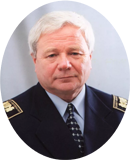 As became evident in the late 70s, the technology used to produce aluminium in the USSR did not yield the high-purity metal needed in aerospace, aircraft and several other industries. Viktor Sizyakov, professor in the Department of Metallurgy at the Leningrad Mining Institute, made a genuine scientific breakthrough. Thanks to his work, aluminium smelters could offer products of unmatched quality; the profitability of field-specific enterprises was increased, too.
As became evident in the late 70s, the technology used to produce aluminium in the USSR did not yield the high-purity metal needed in aerospace, aircraft and several other industries. Viktor Sizyakov, professor in the Department of Metallurgy at the Leningrad Mining Institute, made a genuine scientific breakthrough. Thanks to his work, aluminium smelters could offer products of unmatched quality; the profitability of field-specific enterprises was increased, too.
INVENTION OF SINAL
 In summer 1941, Leningrad Mining Institute professor Alexander Kuznetsov, joined by co-inventors, proposed to the military officials a new explosive substance – "Sinal" (Si N Al) – based on aluminium-silicon blend. Cambrian clay was used as an active ingredient since it could be easily found in the city and its suburbs. Kuznetsov's invention helped supply the Leningrad Front, already suffering from ammunition shortage, with mines, shells and grenades.
In summer 1941, Leningrad Mining Institute professor Alexander Kuznetsov, joined by co-inventors, proposed to the military officials a new explosive substance – "Sinal" (Si N Al) – based on aluminium-silicon blend. Cambrian clay was used as an active ingredient since it could be easily found in the city and its suburbs. Kuznetsov's invention helped supply the Leningrad Front, already suffering from ammunition shortage, with mines, shells and grenades.
VOLGA-URAL PETROLEUM & GAS PROVINCE DISCOVERED
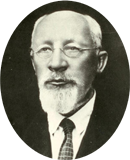 Pavel Preobrazhensky's geological expeditions allowed for the discovery of the world's largest potassium salt deposit. Nowadays, it serves as a source of raw material for Uralkali, a leading fertiliser producer. The scientist found petroleum deposits in the Chusovsky district of Perm Krai as well. Subsequently, the Volga-Ural Petroleum and Gas Province was discovered, also known as the Second Baku.
Pavel Preobrazhensky's geological expeditions allowed for the discovery of the world's largest potassium salt deposit. Nowadays, it serves as a source of raw material for Uralkali, a leading fertiliser producer. The scientist found petroleum deposits in the Chusovsky district of Perm Krai as well. Subsequently, the Volga-Ural Petroleum and Gas Province was discovered, also known as the Second Baku.
MINE SAFETY IMPROVED
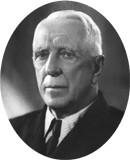 Alexander Skochinsky's work in eliminating methane outbursts in workings and preventing mine fires, alongside implementing self-developed methods of reducing mine dustiness, led to a sharp decrease in mining fatalities.
Alexander Skochinsky's work in eliminating methane outbursts in workings and preventing mine fires, alongside implementing self-developed methods of reducing mine dustiness, led to a sharp decrease in mining fatalities.
OIL REFINING DEPTH INCREASED
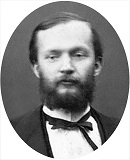 Saint Petersburg Mining Institute professor Konon Lysenko was the first: to say that Russian oil producers were lagging behind the American ones; to adapt the innovative US-made distiller to the properties and composition of Caspian oil; to upgrade the technology for advanced cracking of oil residues; to release the new line of efficient paraffin lamps.
Saint Petersburg Mining Institute professor Konon Lysenko was the first: to say that Russian oil producers were lagging behind the American ones; to adapt the innovative US-made distiller to the properties and composition of Caspian oil; to upgrade the technology for advanced cracking of oil residues; to release the new line of efficient paraffin lamps.
INVENTION OF ELECTRIC ARC WELDING
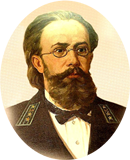 Saint Petersburg Mining Institute professor Nikolai Slavyanov's invention resulted in an increase in weld strength. Consequently, it became possible to weld heavy-gauge steel parts, efficiently repair larger units and mechanisms, such as crankshafts, steam cylinders, cogwheels.
Saint Petersburg Mining Institute professor Nikolai Slavyanov's invention resulted in an increase in weld strength. Consequently, it became possible to weld heavy-gauge steel parts, efficiently repair larger units and mechanisms, such as crankshafts, steam cylinders, cogwheels.
REFORMING METAL INDUSTRY
 Mining Institute graduate Pavel Obukhov's invention improved the quality of Russian cannons to a level above that of the Krupp guns, helped re-equip the army and allowed revenge on the Turks for the defeat in the Crimean War.
Mining Institute graduate Pavel Obukhov's invention improved the quality of Russian cannons to a level above that of the Krupp guns, helped re-equip the army and allowed revenge on the Turks for the defeat in the Crimean War.